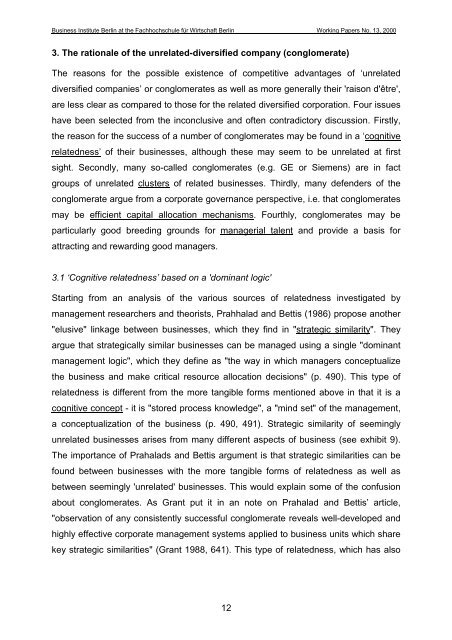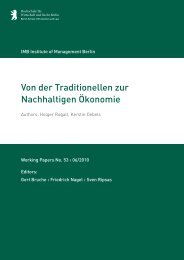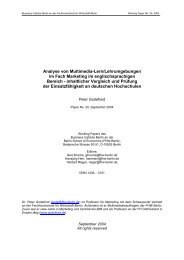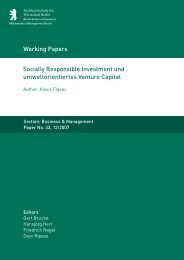Corporate Strategy, Relatedness and Diversification Gert Bruche
Corporate Strategy, Relatedness and Diversification Gert Bruche
Corporate Strategy, Relatedness and Diversification Gert Bruche
You also want an ePaper? Increase the reach of your titles
YUMPU automatically turns print PDFs into web optimized ePapers that Google loves.
Business Institute Berlin at the Fachhochschule für Wirtschaft Berlin Working Papers No. 13, 2000<br />
3. The rationale of the unrelated-diversified company (conglomerate)<br />
The reasons for the possible existence of competitive advantages of ‘unrelated<br />
diversified companies’ or conglomerates as well as more generally their 'raison d'être',<br />
are less clear as compared to those for the related diversified corporation. Four issues<br />
have been selected from the inconclusive <strong>and</strong> often contradictory discussion. Firstly,<br />
the reason for the success of a number of conglomerates may be found in a ‘cognitive<br />
relatedness’ of their businesses, although these may seem to be unrelated at first<br />
sight. Secondly, many so-called conglomerates (e.g. GE or Siemens) are in fact<br />
groups of unrelated clusters of related businesses. Thirdly, many defenders of the<br />
conglomerate argue from a corporate governance perspective, i.e. that conglomerates<br />
may be efficient capital allocation mechanisms. Fourthly, conglomerates may be<br />
particularly good breeding grounds for managerial talent <strong>and</strong> provide a basis for<br />
attracting <strong>and</strong> rewarding good managers.<br />
3.1 ‘Cognitive relatedness’ based on a 'dominant logic'<br />
Starting from an analysis of the various sources of relatedness investigated by<br />
management researchers <strong>and</strong> theorists, Prahhalad <strong>and</strong> Bettis (1986) propose another<br />
"elusive" linkage between businesses, which they find in "strategic similarity". They<br />
argue that strategically similar businesses can be managed using a single "dominant<br />
management logic", which they define as "the way in which managers conceptualize<br />
the business <strong>and</strong> make critical resource allocation decisions" (p. 490). This type of<br />
relatedness is different from the more tangible forms mentioned above in that it is a<br />
cognitive concept - it is "stored process knowledge", a "mind set" of the management,<br />
a conceptualization of the business (p. 490, 491). Strategic similarity of seemingly<br />
unrelated businesses arises from many different aspects of business (see exhibit 9).<br />
The importance of Prahalads <strong>and</strong> Bettis argument is that strategic similarities can be<br />
found between businesses with the more tangible forms of relatedness as well as<br />
between seemingly 'unrelated' businesses. This would explain some of the confusion<br />
about conglomerates. As Grant put it in an note on Prahalad <strong>and</strong> Bettis’ article,<br />
"observation of any consistently successful conglomerate reveals well-developed <strong>and</strong><br />
highly effective corporate management systems applied to business units which share<br />
key strategic similarities" (Grant 1988, 641). This type of relatedness, which has also<br />
12
















